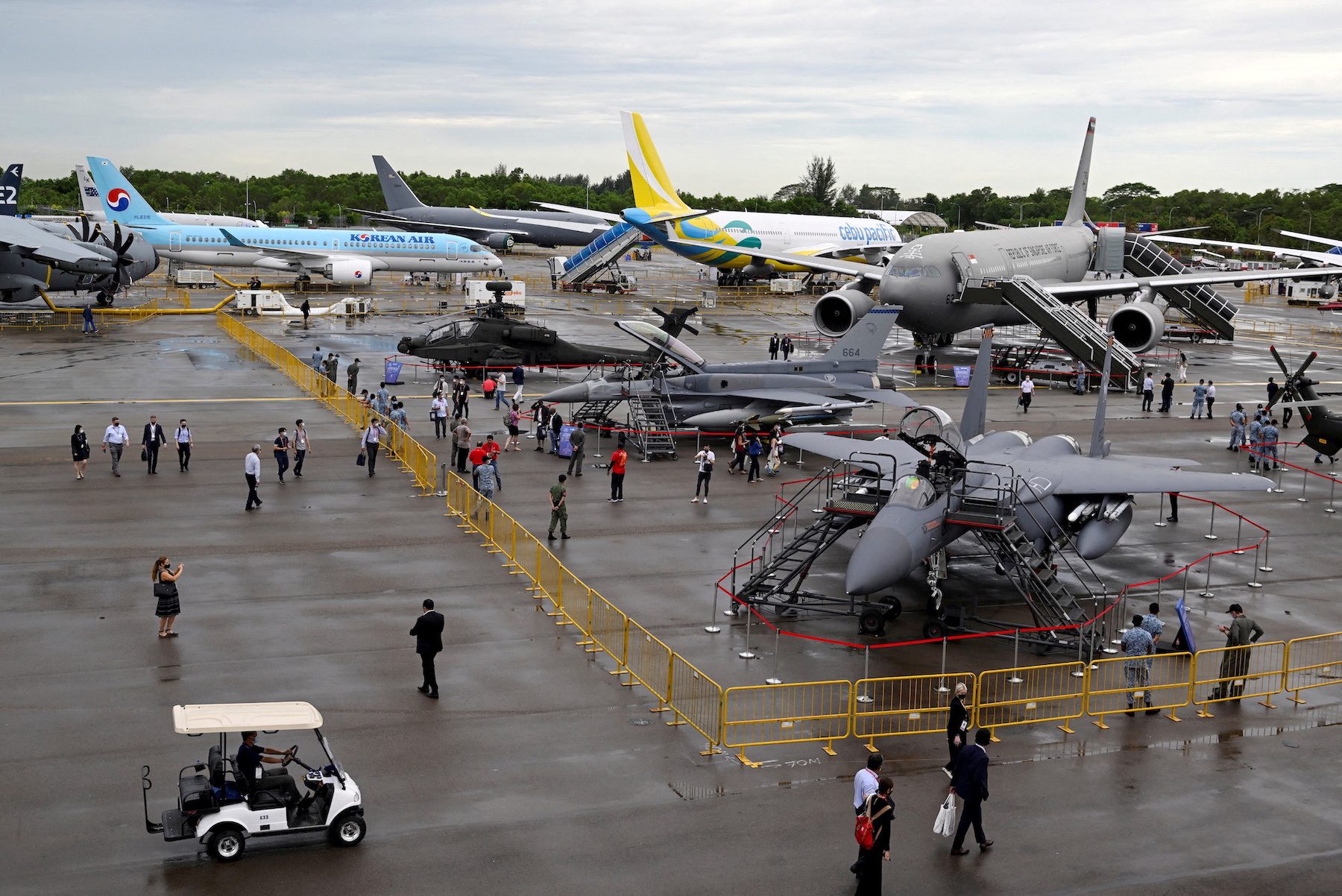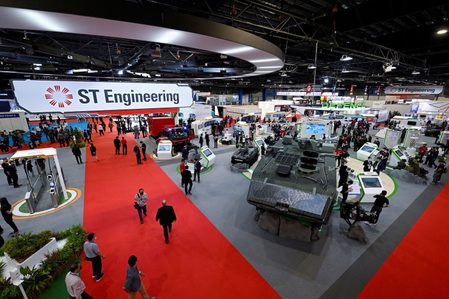SUMMARY
This is AI generated summarization, which may have errors. For context, always refer to the full article.

SINGAPORE – As a depleted Singapore Airshow winds down, delegates reported growing optimism as the hard-hit Asian aerospace market begins to recover despite emerging concerns around labor shortages, rising costs, and supply chain challenges.
Organizers had estimated attendance of more than 13,000 ahead of the four-day show – still a shadow of previous years – but attendees said that even on Tuesday, February 15, the busiest day, only a few thousand people appeared to be at the show. Final numbers are yet to be compiled, organizers said.
Still, repeat visitors such as Eric Noel, an executive at a flight training center in Arizona, said the atmosphere was livelier than the last show in February 2020, when late exhibitor dropouts due to the emergence of COVID-19 left empty spaces and half-finished booths, giving an eerie feel to the display hall at a time of significant market uncertainty.
Attendees at the show on Thursday, February 17, ventured outside into the scorching midday sun to watch the final set of flying displays, including a flyby of a US B-52 bomber, a design that first flew in the 1950s.
This year’s show was the largest event of any kind in Singapore since the start of the pandemic, though the low turnout was a prime example of the devastating effect that strict health and border controls have had on the aviation industry over the last two years.
Yet there is optimism about a reopening in Asia, with host country Singapore on Wednesday, February 16, announcing an opening to quarantine travel from more countries after an initial pause when the Omicron variant emerged late last year.
“People want to get back face to face because we have all figured out Zoom is fine, but it doesn’t really make it happen,” Domhnal Slattery, chief executive of aircraft lessor Avolon, said at the show.
His firm on Wednesday signed a deal to lease at least 100 flying taxis to AirAsia Aviation Group, which aims to launch an air ridesharing business in Southeast Asia.
With passenger travel down during the pandemic, Asian airlines have relied on the cargo market for survival, and freight was the star of the show in terms of major deals.
Singapore Airlines on Wednesday finalized an order for seven Airbus A350 freighters, while Etihad Airways placed a provisional order for seven of the same model.
Singapore Technologies Engineering also racked up more orders for passenger-to-freighter conversions, a business that has helped keep its hangars and workforce occupied during the slowdown in passenger travel.
On the defense side, there were no major deals but manufacturers were hopeful of a rebound as Asian countries emerge from the economic rubble of COVID-19 and look for cost-effective ways to upgrade their militaries.
As demand begins to bounce back, there are growing concerns about cost inflation and difficulties in the supply chain, for both commercial and defense manufacturers.
Sean Padfield, senior vice president, aerospace at seatbelt manufacturer SCHROTH Safety Products, said his lead times for parts from his company’s suppliers had doubled, making it harder to meet customer commitments.
“We’re really trying to smooth out by adding some robustness to our supply chain, like having multiple suppliers for the same parts,” he said on the sidelines of the show. “But one thing we realized in the aviation space, some of these parts are so specialized, it takes a long time to get another supplier up and running to deliver at the same quality and quantity.”
Other industry challenges revolve around labor after major workforce cuts made when demand collapsed in 2020, leading some workers to retire or change industries.
“There is a general labor shortage and the only way to get labor back to work is higher rates,” said Kailash Krishnaswamy, senior vice president of aftermarket services at Spirit AeroSystems. “Where we have the opportunity we are trying to pass off that pricing to the customer. We are trying to build in automation where needed if possible.” – Rappler.com
Add a comment
How does this make you feel?

There are no comments yet. Add your comment to start the conversation.